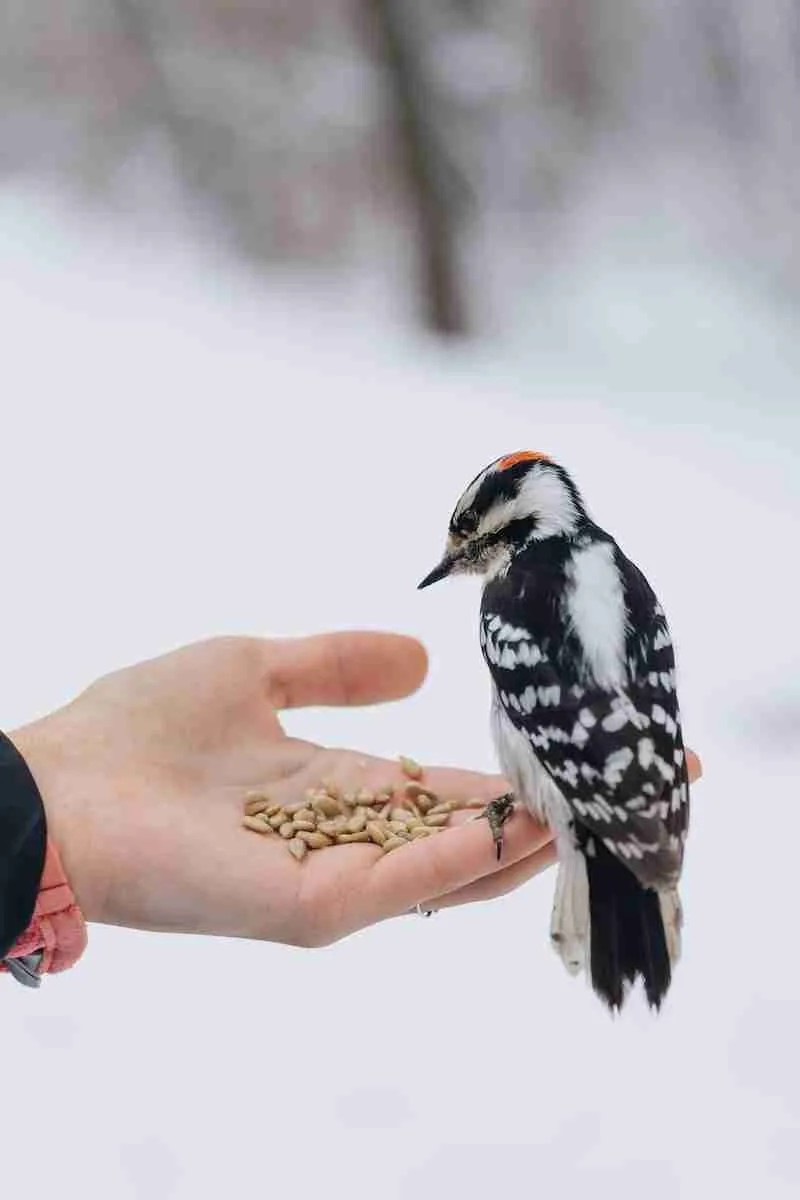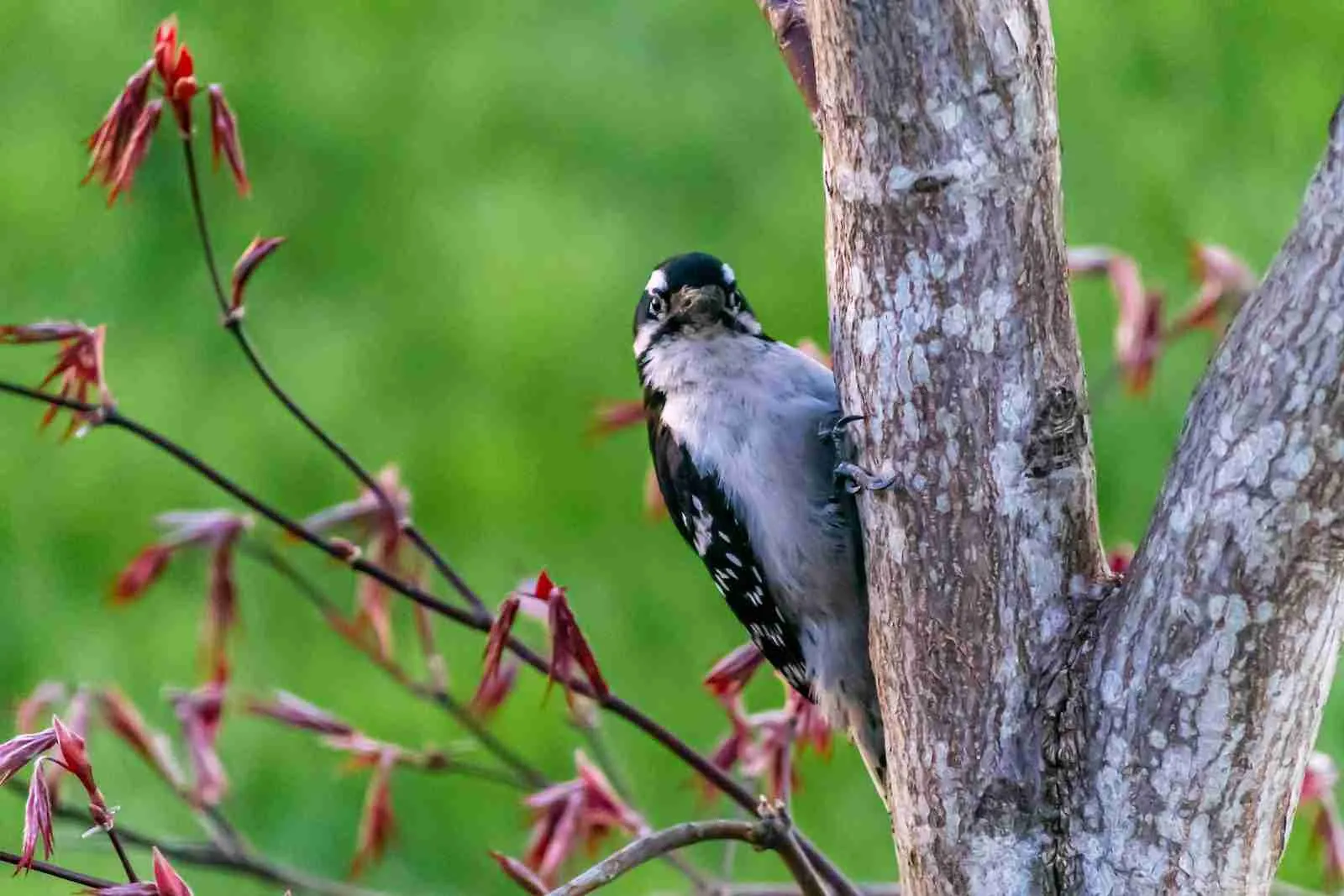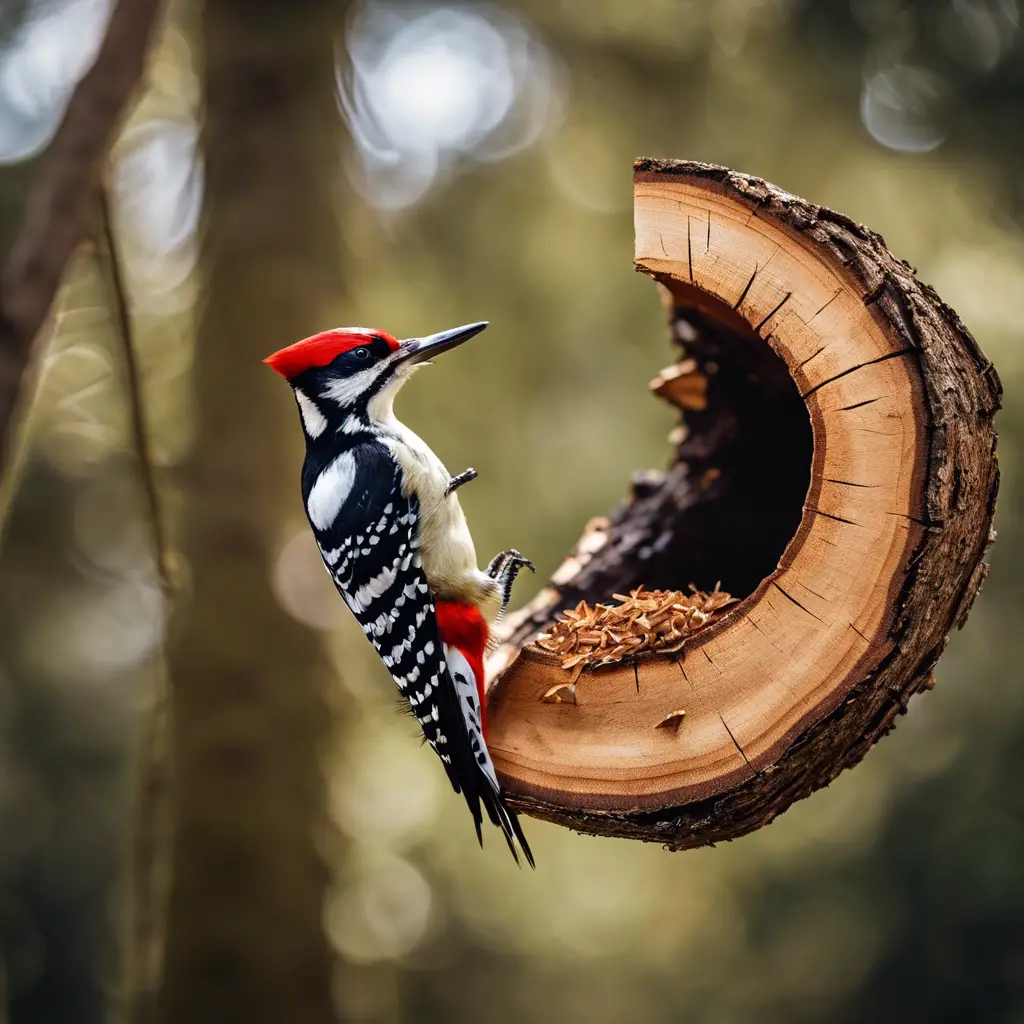Although it is rare, woodpeckers (and other birds) can break or crack their beaks. The size of the crack and its location will usually determine whether the bird lives or dies. Some can repair themselves, but large cracks or complete breaks often result in starvation.
Do woodpeckers ever get their beaks stuck?
Woodpeckers can occasionally get their beaks stuck in a tree while pecking or searching for food. This may occur if the bird’s bill becomes lodged in a hole or other crevice, or if it becomes wedged between two pieces of wood. However, most woodpeckers are able to free themselves from these situations with little or no harm. In some cases, they may even be able to continue pecking at the tree while their beak is stuck.
If a bird does become trapped and it is unable to free itself, it will usually die of starvation or dehydration. Although it is rare, some birds have been known to break or crack their beaks while trying to free themselves. In these cases, the crack or break may be severe enough to result in injury or death. To avoid getting their beaks stuck, woodpeckers will often choose trees with smoother bark or those that have multiple branches and crevices for perching and resting.
Woodpeckers use their beaks for many different things, including drilling holes in trees to find food
Woodpeckers are some of the most interesting birds in the world. They are known for their amazing ability to peck on trees with their sharp beaks, creating holes and drums for both communication and finding food. Though woodpeckers may seem destructive to people, this behavior is completely natural and serves several different purposes. Woodpeckers use their beaks to drill holes in trees to search for food such as grubs, nuts, berries, and insects that hide within the bark.
By poking out these insects, they can easily eat them before anyone else has a chance. Drilling also helps them create larger cavities in trees where they can make nests and raise their young. Lastly, drilling behavior is important for both courtship rituals as well as communication among other woodpecker species about food sources or predator threats.
Without the specialized anatomy of woodpeckers, none of this behavior would be possible. With their impressive intelligence and ability to adapt to a variety of habitats, woodpeckers will continue to fascinate us with their unique way of life on planet Earth!
Is Woodpecker Aggression Related to Beak Damage?
Woodpecker aggression in focus: Recent studies examine whether woodpecker aggression is connected to beak damage. Researchers observe various woodpecker species in the wild, documenting instances of aggression and assessing the condition of their beaks. Understanding any potential correlation could shed light on the evolutionary adaptations of these fascinating birds.
They also use them for communication, tapping out a code that other woodpeckers can understand
Woodpeckers are fascinating animals. Not only are they renowned for their wood-drilling capabilities and unmistakable physical characteristics, but they also possess an incredible capability when it comes to communication. Researchers have long known that woodpeckers tap out certain signals to express alarm, mark territories, and even attract mates.
But recent studies have revealed an additional layer to this code language – one that allows the birds to communicate a surprising number of messages and nuances with other members of their species. By tapping on different objects with varying rates of intensity and frequency, they can indicate whether they’re authenticating a territory or replying in response to a mate’s signal – all without being seen by potential predators.
It truly is remarkable how much meaning these tiny creatures can extract from such simple sounds. And while we may never reach a full understanding of the code language that these birds use to communicate, the tools connecting us are proving invaluable in exploring the depths of these complex avian conversations.
Their beaks are very strong and can withstand a lot of force
Birds have an impressive array of natural abilities, and one of their most notable adaptations is the strength of their beaks. From cracking open nuts and tearing off pieces of meat, to building nests with interlocking twigs, bird beaks are some of the most powerful tools in nature. While many birds rely on their strong jaws as defensive mechanisms, rooks are among the few species that can wield them offensively.
Not only do they use their beaks during mating rituals — a quick peck can protect territory from intruders — but they can also use them to capture prey. Rook beaks are especially designed for this purpose; due to its conical shape, it allows birds to apply the perfect amount of pressure and twice as much force as a flat beak.
In addition to having great strength relative to its size, these adaptive beaks are capable of withstanding great amounts of force without breaking or becoming damaged. No matter what tasks they must perform, a roster’s beak provides them with invaluable power and protection.
Is Woodpecker Aggression Related to Beak Damage?
Woodpecker aggression in focus: Recent studies examine whether woodpecker aggression is connected to beak damage. Researchers observe various woodpecker species in the wild, documenting instances of aggression and assessing the condition of their beaks. Understanding any potential correlation could shed light on the evolutionary adaptations of these fascinating birds.
However, sometimes they do break their beaks, usually when they misjudge the strength of the tree branch they’re pecking on
It is well known that hummingbirds have strong and nimble beaks; made to pierce through nectar-rich flowers, crack open seeds, and feed on the sweetest of fruits.
However, sometimes they do break their beaks, usually when they misjudge the strength of the tree branch they’re pecking on. The damage can lead to anything from a minor chip to a more catastrophic break. In these cases, once a piece of their beak has broken off it is unlikely to grow back – even with months of dedicated treatment. To restore its ability to gather nectar and keep it healthy, a hummingbird may have to rely on food sources close to the ground for some time or until it adjusts to its new anatomy.
Fortunately, these birds are highly adaptable and resilient creatures – so it’s not uncommon for them to overcome such obstacles within only a few weeks of injury as long as they receive proper nutrition and care from bird enthusiasts or avian experts alike.

An avid ornithologist, zoologist and biologist with an unwavering passion for birds and wild animals.
Dr. Wilson’s journey in ornithology began in childhood and led him to obtain a Ph.D. in Ornithology from the prestigious Avian Research Institute. He has worked closely with renowned experts in the field and conducted extensive research and field studies globally.



